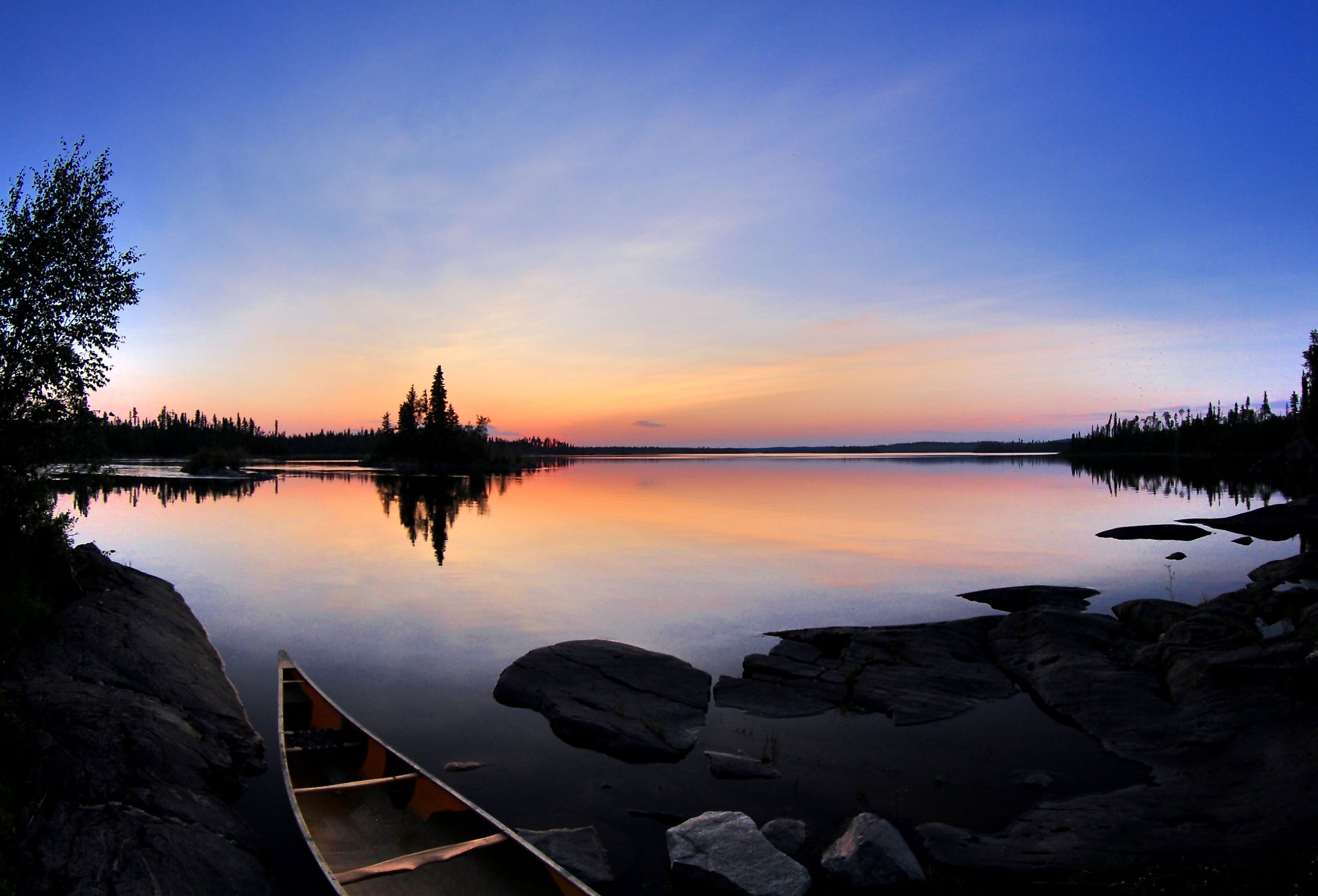
Churchill River
Named after the 1st Duke of Marlborough and Prince of the Holy Roman Empire John Churchill, the Churchill River is a major river in central Canada. The river covers an immense distance of about 1,000 miles (1,609 km) and its basin spans across the provinces of Alberta, Saskatchewan, and Manitoba. It is also home to many unique formations such as the Nistowiak Falls, one of Canada’s tallest waterfalls. Thanks to this, the river has garnered many names throughout the years with the native Chipewyan people calling it des nëdhë́, which means "Great River." This article takes a closer look at the Churchill River to reveal what truly makes it such a “great” river!
Source Of The Churchill River
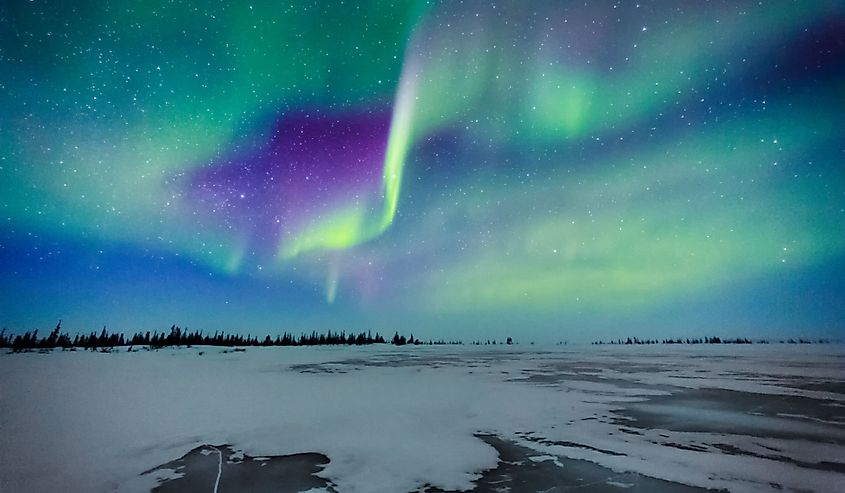
The Churchill River begins its journey in the northwest of Saskatchewan from Churchill Lake. Surrounded by many other large lakes and rivers, Churchill Lake is a large glacial lake in a sparsely populated area of the country. The lake has a total water volume of 1.17 cu. miles (4.88 sq. km.) and remains frozen for about 6 months of the year between November and May. That being said, while Churchill Lake is its primary source, many other bodies of water within the Canadian Shield region also promote the flow and course of the Churchill River. From its source, the Churchill River begins its course southeast in the direction of the lake Lac Île-à-la-Crosse.
Course and Basin Of The Churchill River
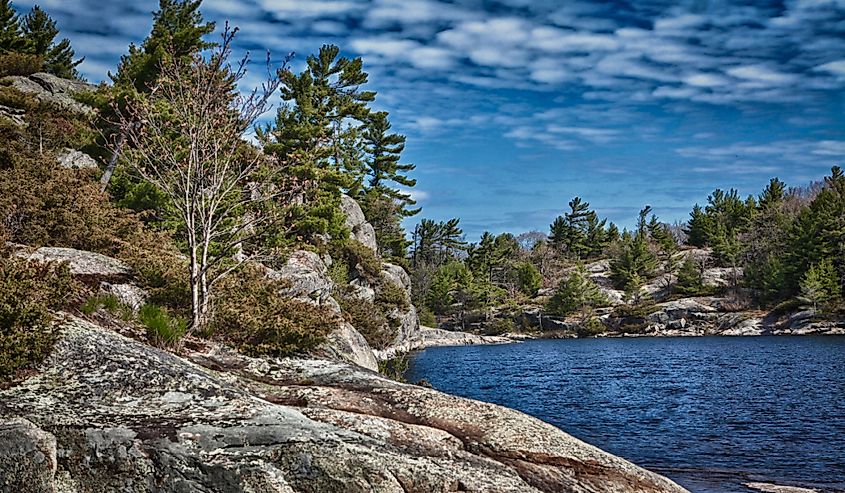
After its source at Churchill Lake in northwestern Saskatchewan, the Churchill River takes quite an erratic path. This is because the river’s 1,000-mile (1,609 km) length is entirely located within the Canadian Shield, which is flush with lakes, rivers, and other bodies of water. Thus, after it crosses the Lac Île-à-la-Crosse, the river takes a northeastern path, crossing through the Pine River and Dipper Lake until reaching central Saskatchewan. From here, the river moves predominantly eastward making its way through dozens of lakes and swamps such as the Birch Rapids until it reaches the province of Manitoba. Once reaching Manitoba, the Churchill River continues moving eastward through lakes such as Highrock, Granville, and Gauer, until it gradually begins moving toward the northeast. The final 100 miles of the river continue in this direction with less interference from lakes to its mouth at the southwestern end of the Hudson Bay.
Testament to its size, the Churchill River’s basin is quite immense, spanning even further east into the province of Alberta. It covers a total area of 108,600 square miles (281,300 sq. km.) within the three provinces-–more than 40% of Saskatchewan’s area! This large basin is bolstered by the river’s immense number of tributaries and adjoining lakes. Specifically, while the Churchill River has an average discharge (volume of water flow) of 42,000 cubic feet/s (1,200 cu. m/s) which is not extremely high, it has many major tributaries that span across the provinces. Apart from the major lakes it crosses such as Lac Île-à-la-Crosse, Southern Indian Lake, Granville Lake, etc., the Churchill River has two large tributaries; Beaver River and Reindeer River. Named after prominent Canadian animals, these rivers join the Churchill at Lac Île-à-la-Crosse and the Manitoba River respectively, providing a large boost to its water flow and size.
Climate Of The Churchill River
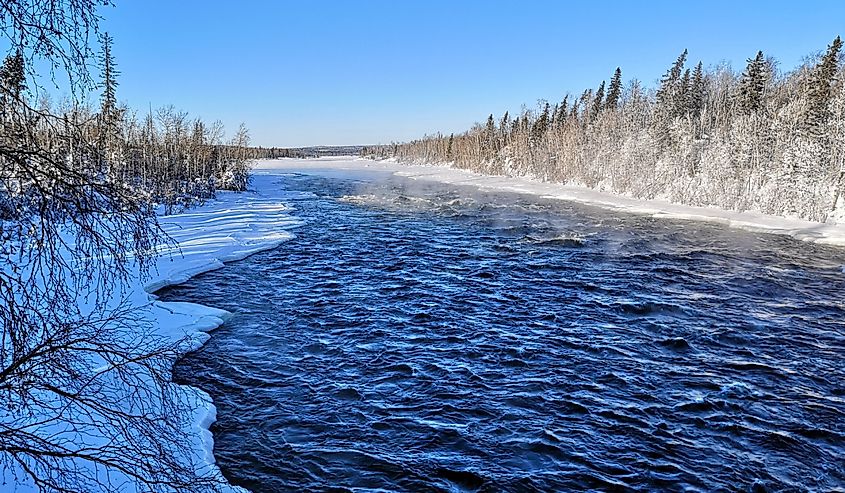
Spanning 1,000 miles (1,609 km) across two provinces, the climate across Churchill River does vary from its source to mouth. That being said, the majority of the river lies within a "Dfb" (Warm Summer Continental Climate) according to the Koppen Climate Classification. This is indicative of seasonal temperatures ranging from hot and humid summers to cold and dry winters. Thus, the area in and around Churchill River sees varying temperatures with summer averages reaching up to 66.3°F (19.1°C) in the warmest month of July, a pleasant time to visit. On the flip side, winters are much colder with temperature averages dropping to 7.1°F (-13.8°C) in January. However, January can get a lot colder, and in extreme conditions, the temperature can drop as low as -47.0°F (-43.9°C), which is the lowest recorded temperature in Saskatchewan. In terms of precipitation, the varying temperatures provide the river with both rain and snow depending on the time of year. The river’s source at Churchill Lake sees approximately 15 inches (38 cm) of rainfall and 54.6 inches (138.8 cm) of snowfall per year on average.
Flora & Fauna In The Churchill River
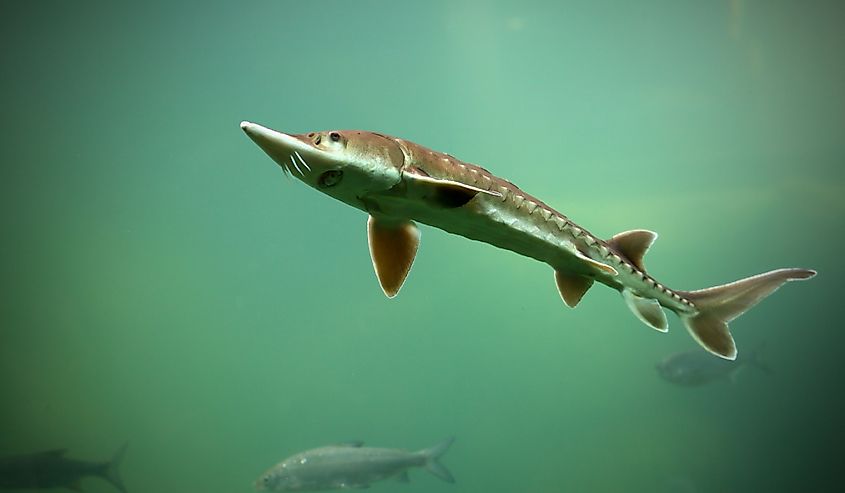
Located within north-central Saskatchewan and Manitoba, the Churchill River is located within a subhumid high boreal ecoclimate. This region is made up of continuous coniferous forests and you can find a wide range of cold-resistant trees such as black spruce and jack pine around the river. In addition, the river’s banks have a prominence of mosses and lichens along the ground, as well as ericaceous shrubs, depending on which part of the river you are on. That being said, while there is ample flora surrounding the river, the cold climate also leads to the presence of permafrost, which does stunt the growth of many plant species.
In terms of animal life, the Churchill River is an important habitat and source of water for many animal species. This includes marine animals within the river as well as other mammals and birds that live nearby and use the river to sustain themselves. Marine life, for example, consists of dozens of species including the sauger, white sucker, cisco, lake trout, and more. Moreover, the river is also home to endangered fish such as the lake sturgeon, which is only found in certain glacial-linked regions of North America. Moving out of the water and onto the banks of the Churchill River, you can find a wide range of animals from beavers and muskrats to the much larger moose and black bears. Along with this, many birds also live along the river including the bald eagle, hawk owl, and the famous common loon! Thus, with so much life supported by the river, it is truly an important ecological presence in the Canadian Shield.
Economic Importance & Tourism of the Churchill River
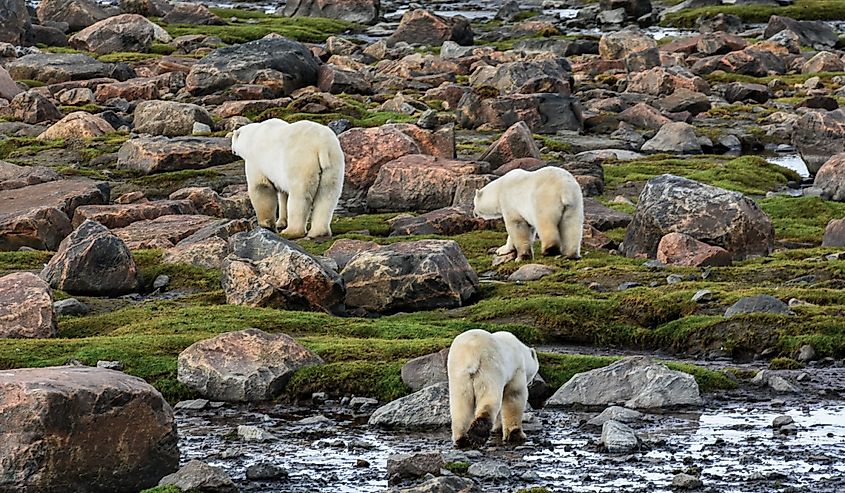
Apart from its ecological significance, the Churchill River is also famous for its economic and tourist activities. In particular, the river supports the Whitesand Dam hydroelectric generating station near the Saskatchewan-Manitoba border. This dam is located downstream on the Reindeer River fork, and was built in 1942 with a capacity of 111 megawatts. Apart from this existing project, both Saskatchewan and Manitoba have plans for a total of four more projects along the river which could produce more than 400 megawatts in total.
Due to its unique composition of interconnected lakes, the Churchill River provides a combination of still water, falls, rapids, and more which provide the perfect environment for a range of tourist activities. In particular, the presence of both fast-moving water along undulating rocks and slow, still water within large lakes makes it ideal for both relaxed boating and whitewater rafting. Testament to this, the river is a famous spot for canoeists and one can find areas that suit people of all skill levels. In addition, the many waterfalls along the river provide scenic views worth visiting.
Conclusion
Combining its immense size, unique shape, and importance for flora and fauna in the Canadian Shield, the Churchill River is an amazing body of water everyone can enjoy. Whether this is traveling through the chilly waters of Saskatchewan or canoeing along one of the many lakes that surround the river, any trip here is sure to be great. Furthermore, the river is a significant source of energy and with many plans popping up, could be pivotal for local power generation.











